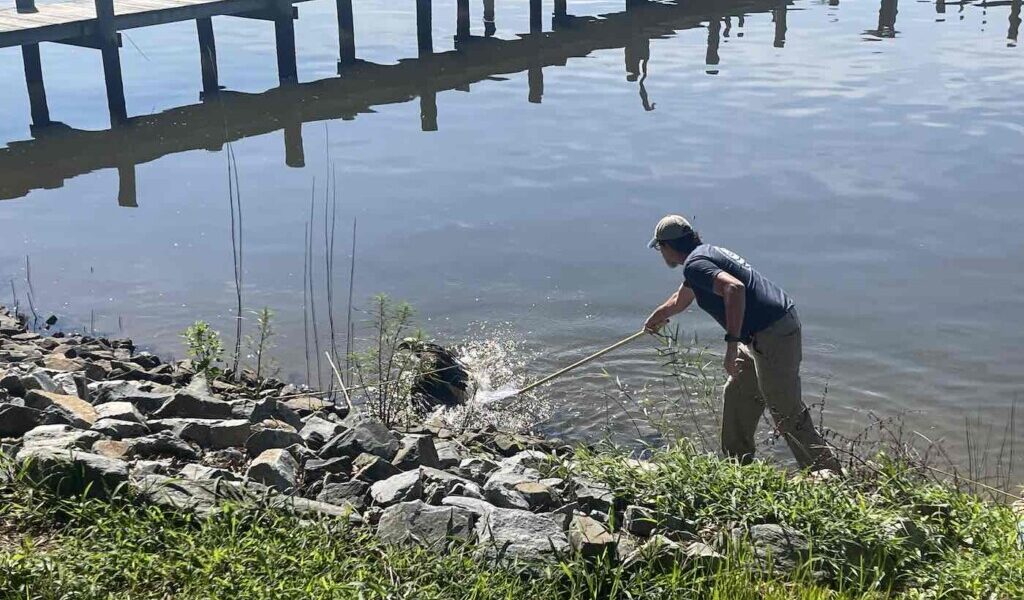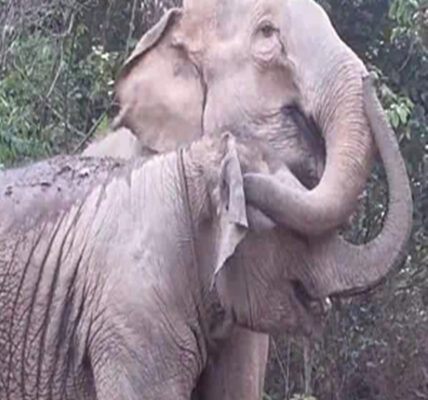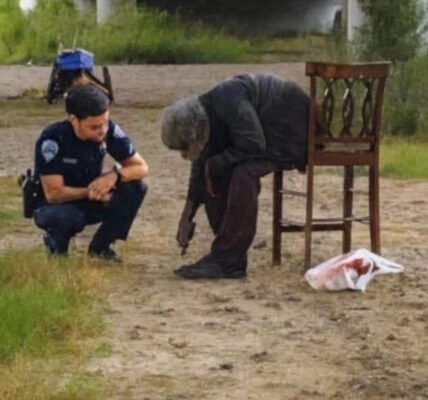On a quiet afternoon along Maryland’s Eastern Shore, a call for help rippled through Facebook. A bald eagle, the very symbol of American strength and freedom, had been spotted limping on a dock over the Chester River. Its wing appeared broken, its foot injured. Alone and vulnerable, the bird that once soared the skies was now struggling to survive.
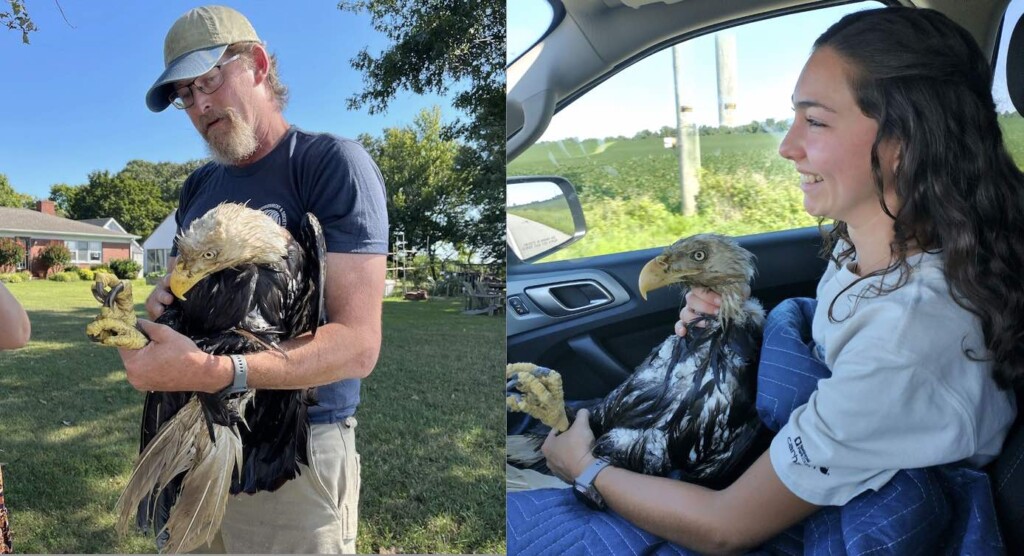
David Kramer, Director of the Center for Environment at Washington College, saw the post and immediately recognized the urgency. For years, he had worked with raptors—rescuing, researching, and rehabilitating them. But this was no ordinary rescue. Bald eagles are powerful creatures, wary of human approach and dangerous if mishandled. Kramer knew time was running out.
He gathered two staff members, a net, and a blanket, and together they set off toward the riverbanks. The eagle, however, was not ready to surrender. As the team approached, the massive bird spread its wings and attempted to fly, but instead crashed into the water, its strength no match for its injuries. Desperate, it struggled across to the opposite shore.
Without hesitation, Kramer and his team raced across the bridge and found their way into a backyard where the exhausted eagle had landed. The scene was tense; the raptor, soaked and wounded, still possessed the wild power of its species. With practiced calm, Kramer closed the distance, securing the eagle’s talons—the “three sharp ends,” as he calls them—before gently lifting the bird into safety. A colleague quickly tucked its broken wing against its body, swaddling the eagle in a padded blanket.
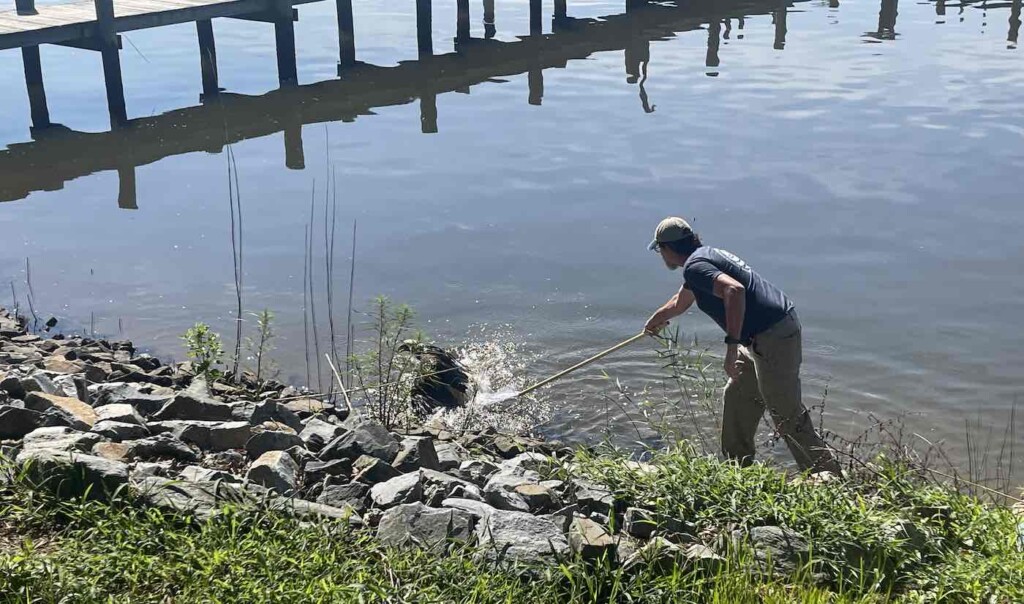
For the journey back to the River and Field Campus, the eagle sat quietly on the lap of staff member Emma Cease, wrapped securely, its piercing eyes still alert. It was a moment of fragile trust between human and bird, the wild spirit of the Chesapeake resting silently in the care of those who refused to leave it behind.
The eagle was soon transported to Tri-State Bird Rescue, where it became a patient and underwent surgery. Today, it is in rehabilitation, beginning the long road back to the skies. Thanks to quick action and experience, its future now holds the possibility of flight once again.
For Kramer, the rescue was not just another day’s work but a reminder of both the fragility and resilience of nature. “If you don’t have handling experience, don’t approach the bird,” he cautioned. “Bald eagles have three sharp ends—if they can get you with one, they will. The goal is to restrain the bird safely. We want to limit injury to people as well as the bird.” His words are a testament to the balance of courage and caution required when working with these magnificent creatures.
Washington College itself is no stranger to bird encounters. At its Foreman’s Branch Bird Observatory, researchers and students have banded and released more than 13,000 birds in the past year alone, representing over 125 species—herons, ospreys, owls, hawks, and countless songbirds. Nestled along 5,000 acres of wetlands, forests, and farmlands, the campus serves as a haven for migrating flocks and a living laboratory for conservation work.
The Chester River, winding past fields and forests, is a critical stopover for birds traveling thousands of miles. Here, ducks and geese rest in winter, shorebirds pause in migration, and the call of the Virginia quail echoes once again thanks to habitat restoration. It is a landscape where the wild is both studied and protected, a place where a wounded eagle can find a second chance.
On that day, the rescue was more than a daring act. It was a moment of connection between human responsibility and the untamed spirit of nature. A bird that embodies freedom was grounded, but not forgotten. Because three people with a blanket, a net, and a will to act believed that even the mightiest creatures sometimes need a helping hand.
